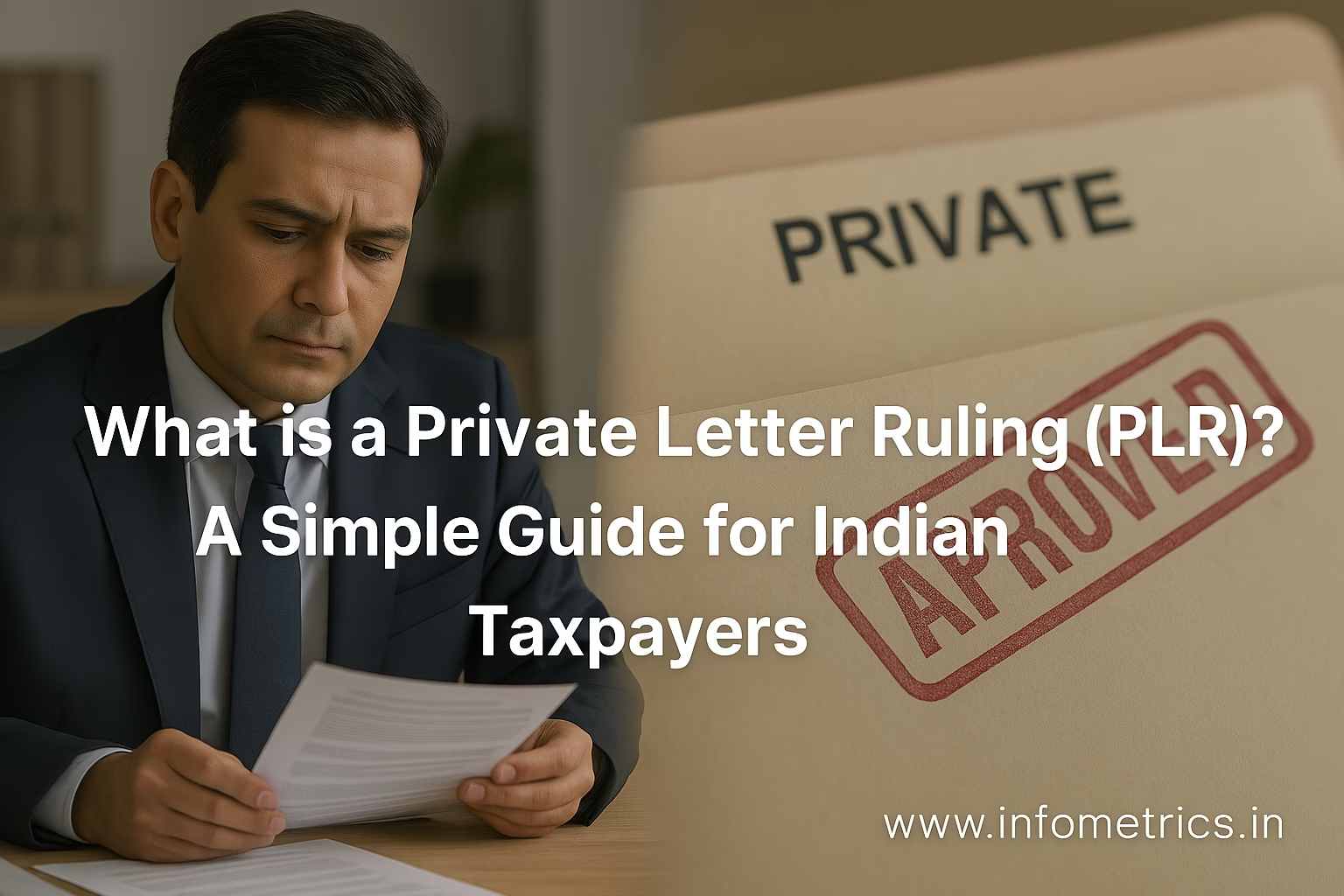🧾 Private Letter Ruling (PLR) in India – A Complete Guide for 2025

📌 Introduction to Private Letter Ruling
In India’s complex tax landscape, it’s easy for businesses and individuals to get confused about how certain transactions are taxed. That’s where a Private Letter Ruling (PLR) steps in.
It provides official clarification from the Income Tax Department on how tax laws apply to a specific transaction. Whether you’re a startup, investor, or multinational, understanding PLRs can help you avoid future disputes and gain tax certainty.
🧾 What is a Private Letter Ruling?
A Private Letter Ruling is a written interpretation of tax law given by the Authority for Advance Rulings (AAR) in India. It answers a taxpayer’s specific query regarding a proposed or ongoing transaction.
Unlike general tax advice, a PLR is tailored to your unique situation—and the ruling is legally binding for your case.
🏢 Who Can Apply for a Private Letter Ruling?
Private Letter Rulings in India are mostly used by:
-
Multinational corporations (MNCs)
-
Startups receiving foreign investment
-
Non-resident Indians (NRIs)
-
High-net-worth individuals (HNIs)
-
Joint ventures and foreign investors
Any entity facing tax ambiguity in a proposed transaction can request a Private Letter Ruling for clarity.
📄 When Do You Need a Private Letter Ruling?
Here are some common situations:
-
✅ Foreign Investments
A foreign company planning to invest in an Indian startup may seek a PLR to understand the tax implications. -
✅ Business Restructuring
If a company transfers assets or shares between entities, a ruling can clarify tax treatment under relevant sections. -
✅ Real Estate Transactions
An NRI selling property might want to confirm capital gains liability via a Private Letter Ruling. -
✅ Cross-border IP Transfers
Startups transferring intellectual property to foreign entities can use a PLR to determine tax obligations.
✅ Benefits of a Private Letter Ruling
✔️ 1. Legal Clarity
Get a clear answer directly from tax authorities before taking action.
✔️ 2. Reduced Risk
Avoid tax notices, audits, and disputes by understanding implications in advance.
✔️ 3. Legally Binding
The ruling binds the tax department and the taxpayer for that specific situation.
✔️ 4. Strategic Tax Planning
It allows companies to plan transactions in a tax-efficient and compliant manner.
📑 How to Apply for a Private Letter Ruling in India
The process of obtaining a Private Letter Ruling is straightforward but detail-heavy:
Step 1: Prepare Your Application
Include these in your request:
-
Name and status of the applicant
-
Full details of the transaction
-
Relevant tax provisions and your interpretation
-
Supporting documents
Step 2: Submit to AAR
Applications are filed with the Authority for Advance Rulings. A filing fee is required.
Step 3: Hearing
In some cases, an oral hearing may be scheduled to present your case.
Step 4: Receive the Ruling
The AAR will issue a written Private Letter Ruling, which is binding for your case.
⚖️ Limitations of a Private Letter Ruling
While PLRs are powerful tools, they have their limits:
| Limitation | Details |
|---|---|
| Not a precedent | Cannot be cited by other taxpayers |
| Facts must be true | Incomplete or false disclosures can invalidate the ruling |
| Processing time | Rulings can take weeks or months |
| Only for applicant | Applies only to the person/entity requesting it |
🌐 How Private Letter Ruling’s Work Globally vs. India
In the U.S., the IRS issues Private Letter Rulings. In India, it’s handled by the AAR.
India has also adopted faceless schemes to digitize tax services, but PLRs still require detailed documentation and sometimes physical hearings.
💼 Real-World Example of Private Letter Ruling
Case: A tech startup in Bengaluru receives an acquisition offer from a U.S. company. They need to transfer their intellectual property (IP) abroad.
Instead of taking a chance on tax interpretations, they apply for a Private Letter Ruling from the AAR. The ruling confirms the transfer qualifies for tax exemption under the Double Taxation Avoidance Agreement (DTAA).
Result: The deal proceeds smoothly, with no tax shocks later.
💬 Final Thoughts on Private Letter Ruling
A Private Letter Ruling can be the difference between smooth execution and future tax complications. Whether you’re dealing with investments, mergers, or asset transfers — PLRs provide the legal clarity and confidence you need in 2025.
If you want to take proactive control of your tax planning, don’t ignore the power of a Private Letter Ruling.
Also Read – Private Letter Ruling
Cricket in Olympics 2028: The Bold Move That Could Change the Sport Forever
Best Dividend Stocks vs. Growth Stocks: Which Investment Strategy Is Right for You in 2025?
How to Start Your Investment in Mutual Funds: From Zero”0″ to Investor
Mastering Communication Skills and Personality Development for Success 2025
